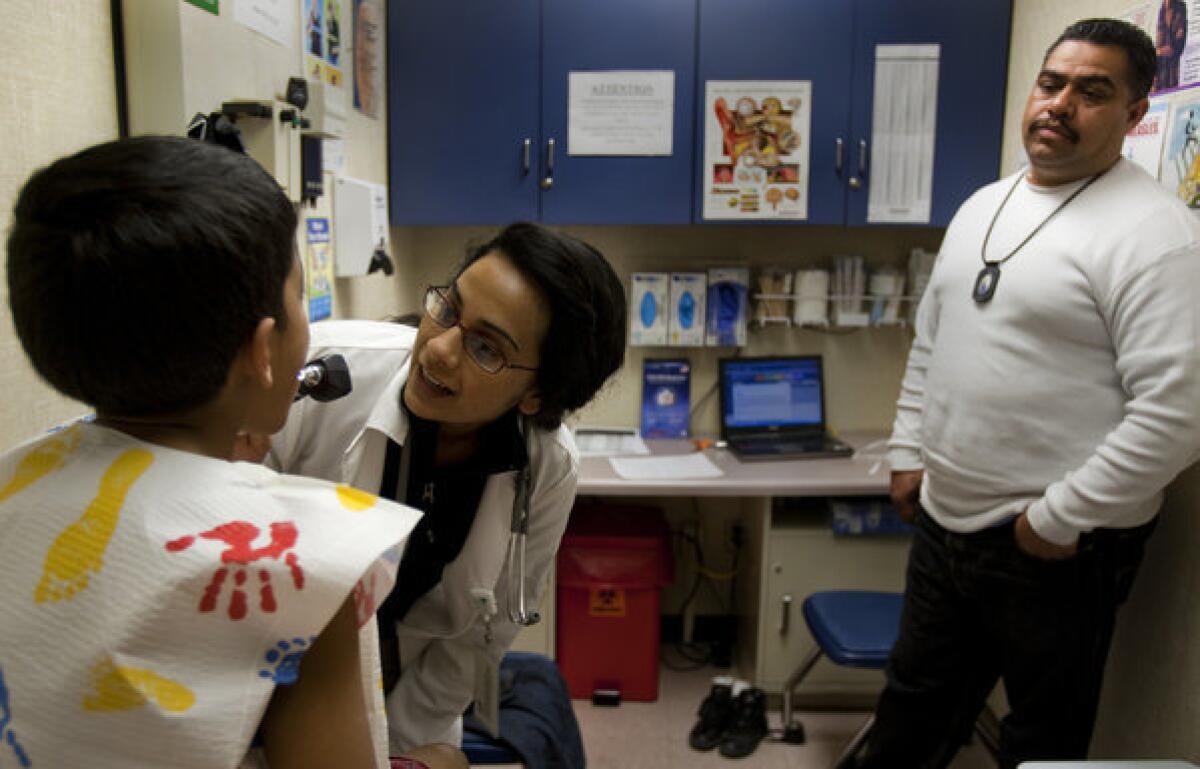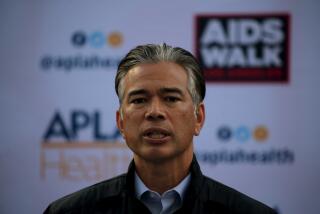Column: One way to make healthcare more affordable? Give California nurse practitioners autonomy

SACRAMENTO — More Californians are acquiring medical insurance, but there are increasingly fewer primary care doctors to treat them. There’s an easy partial fix, but it’s blocked by an old turf war.
Negotiating a truce is not easy. In fact, it’s probably impossible.
So one side will probably win and the other side will lose in the Legislature this year — again.
The turf battle is between physicians, represented by the powerful California Medical Assn., and “super nurses,” or nurse practitioners.
The CMA has always won in the past. But maybe not this time. It’s looking like it’s finally the nurse practitioners’ year.
Who are nurse practitioners? They rank somewhere between a registered nurse and a doctor. They’re registered nurses who have more training than ordinary RNs and have at least a master’s degree and maybe a doctorate.
Unlike an RN, a nurse practitioner can diagnose, order tests, write prescriptions and manage a patient’s care — routine stuff, such as treating colds or muscle cramps. More acute ailments are referred to a physician.
Current law requires an NP to be supervised by a physician. A doctor can oversee up to four NPs but doesn’t have to work in the same building. The doc can practice miles away. In many cases, the NP must pay the physician a fee.
There’s an annoying slowing of care because when a nurse practitioner orders a prescription or medical supplies, such as a wheelchair or oxygen, it requires a physician’s signature.
Assembly Bill 890 would give nurse practitioners autonomy. They could work on their own without the need of a doc babysitter.
For the first time Monday, a nurse practitioner bill passed the state Assembly and moved to the Senate. The vote was overwhelming: 61 to 1.
“This will provide more access to quality healthcare,” the author, Assemblyman Jim Wood (D-Healdsburg), asserted during the floor debate. “The reality is we need to take care of people who need care the most.”
Obamacare and California’s expansion of Medi-Cal — the state’s version of federal Medicaid for the poor — have increased the number of people with health insurance. But finding medical care has become increasingly tough. Many primary care physicians refuse to treat Medi-Cal patients because state reimbursement rates are so low.
Moreover, there are fewer and fewer primary care doctors — only one-third, roughly 20,000, of all practicing physicians. The rest have gone into specialized medicine. Baby boomer docs have also been retiring.
“Between 2008 and 2016, there was a 10% drop of primary care physicians in California while the population grew by 2.4 million,” Wood says.
California is projected to be short 4,100 primary care doctors by 2029.
“The reality is, we’re never going to catch up at this rate,” says Wood, a dentist. “Why wouldn’t we want to use a tool that has been effective in 22 other states?”
That tool is nurse practitioner autonomy like what is proposed in Wood’s bill.
When nurse practitioners are allowed to practice independently, many RNs seek the extra training and become NPs. They also are more affordable for clinics to hire.
There are currently roughly 22,000 NPs practicing in California — slightly outnumbering primary care physicians. And their billing rates presumably would be significantly lower.
California is the only Western state with major restrictions on nurse practitioners. We’re right in there with Texas, Oklahoma, Georgia, Tennessee and the Carolinas, among a few other restrictive states.
Wood has tried some tactical maneuvering to coax his bill through the Legislature.
For example, the Board of Registered Nursing regulates all nurses, but the CMA doesn’t trust that board, Wood says. The docs wanted the state medical board to regulate nurse practitioners if they’re cut loose from physicians. But the medical board wasn’t interested.
So Wood attempted a compromise. He amended the bill with a new state board to regulate NPs — it would be called the Advanced Practice Registered Nursing Board. No sale. The CMA didn’t budge.
But the Board of Registered Nursing came out against the bill for an understandable reason: It would suffer a $5.4-million loss in nurse practitioner fees that would go to the new board. The nursing board’s total budget is $26 million.
For the same reason, the politically powerful California Nurses Assn. — the nurses union — also suddenly opposed the bill.
So in the Senate, look for Wood to scratch the proposed new board from the bill and leave the NPs regulated by the old board. Then the board and the union will drop their opposition.
“We’re neutral on the bill’s broader policy,” says Stephanie Roberson, lobbyist for the nurses union.
Wood has about given up trying to negotiate with the CMA.
The physicians’ organization contends on its website that “this bill would remove critical patient protections by allowing NPs to practice without physician supervision…. It is a dangerous bill.”
Baloney. There’s plenty of research in other states showing that patients are as safe with autonomous NPs as physicians.
“There are no perfect doctors either,” Wood says. “I’ve asked the CMA: ‘If you’ve got objections and have evidence, give them to me.’ And I’ve gotten nothing.”
I’m thinking that doctors are leery of competition from the more affordable nurse practitioners — and want to keep pocketing those NP fees.
Patients need a wider choice in affordable care. And nurse practitioners are one logical answer.
More to Read
Sign up for Essential California
The most important California stories and recommendations in your inbox every morning.
You may occasionally receive promotional content from the Los Angeles Times.











